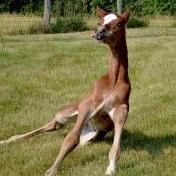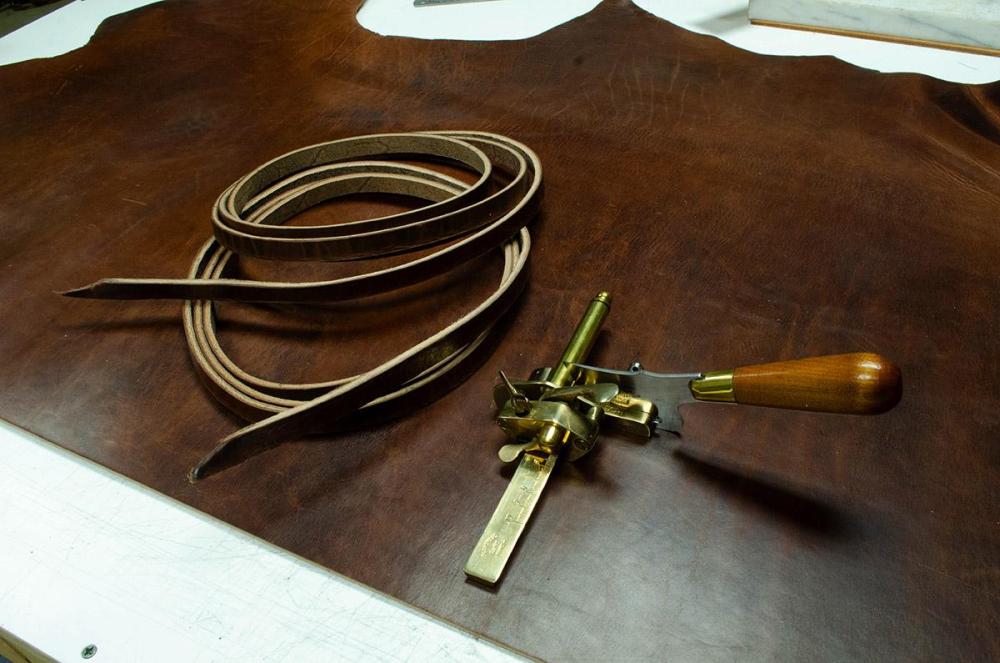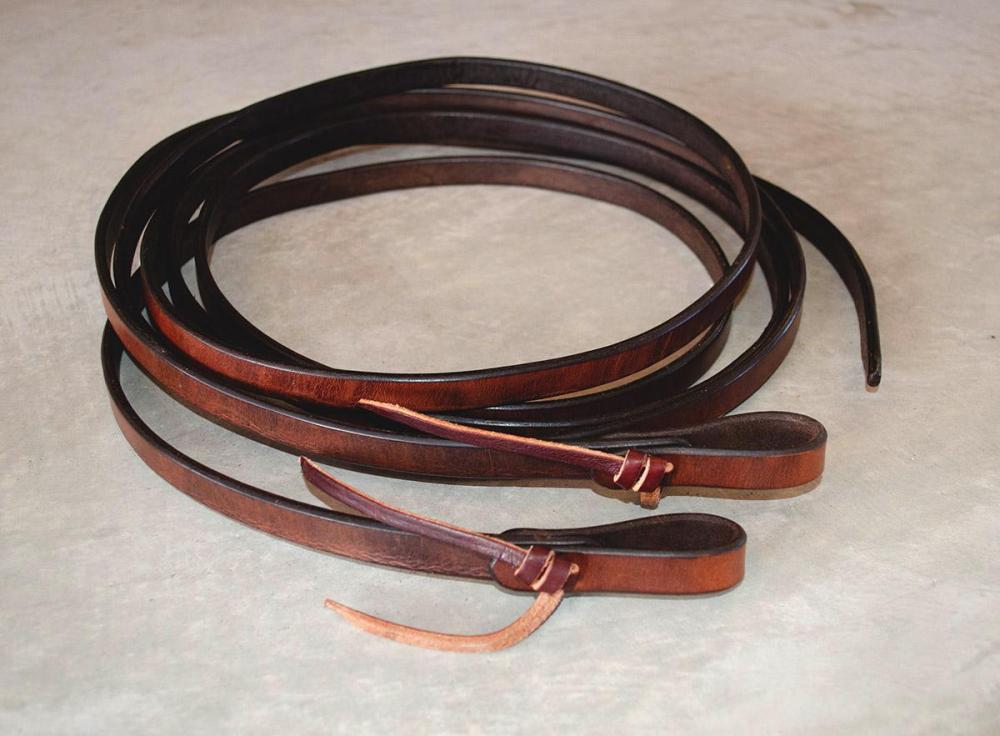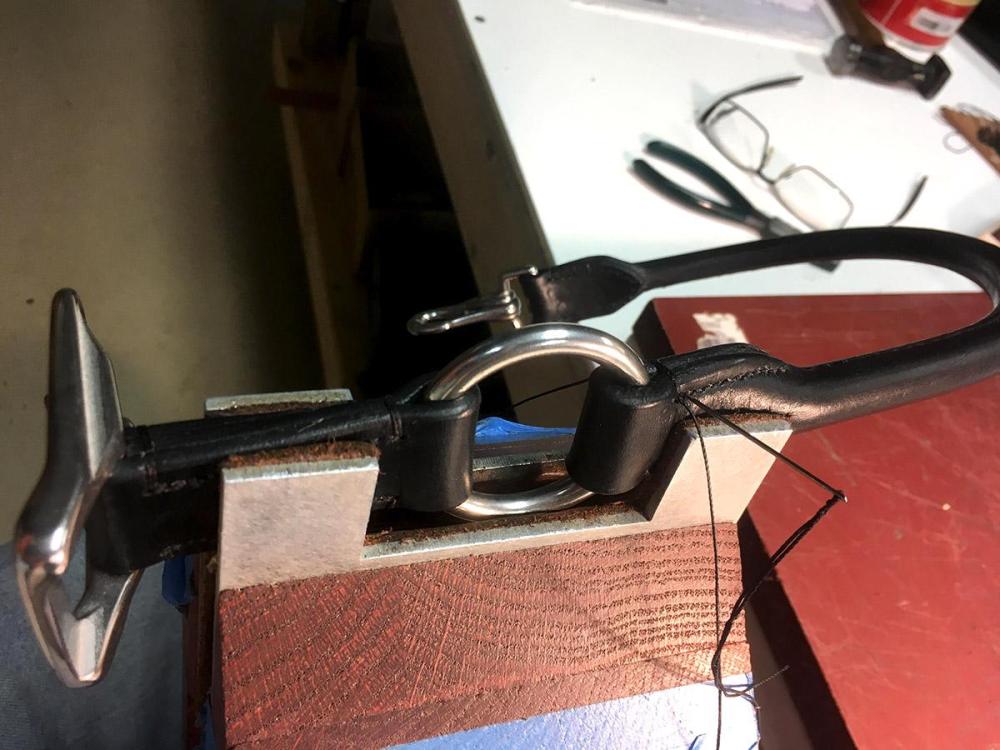-
Posts
1,284 -
Joined
-
Last visited
Content Type
Profiles
Forums
Events
Blogs
Gallery
Everything posted by TomE
-
After waxing the thread, pull it through some heavy brown paper to evenly distribute the wax.
-
Handsome, impressive craftsmanship as always. Lots of details that fit together perfectly.
-

Good books on making designs for leather carving?
TomE replied to DaleksInc's topic in How Do I Do That?
The Leather Crafters and Saddlers Journal online store has a number of books on Sheridan style carving. I liked reading this one https://leathercraftersjournal.com/product/sheridan-style-floral-drawing-gabor-pinter/. -
Thanks for your reply. I have serveral of Steinke's books on saddlery, harness, and bridlework that have been very helpful. He is doing some saddlery work again and occasionally posts on Facebook and Youtube.
- 33 replies
-
- panel
- jumping saddle
-
(and 2 more)
Tagged with:
-
That looks like a base for a Chicago screw. Chicago screws are typically 1/8" diameter machine screws (not sure about the thread pitch) and readily available. Use thread locker or nail polish on the threads to secure it.
-
What? No cryptocurrency in your gambling theme? Very professional looking work. I like your use of color.
-
Thanks, Ron. I am on the steep end of the learning curve for western tack and appreciate your advice. That sounds like a time saver compared to my approach for finishing the edges.
-
I did not stretch the leather. I used the butt end of the hide for the billet/water loop rein end. The water loops are 7" long with #5 holes spaced 3/8" from each end and another hole 1/2" inboard from the first. The 1/4" strings are 12 in long and made from 6/7 oz latigo. I beveled the strings by clamping a straight edge on my bench to support the string and using an edger to bevel. Thanks, Bruce. I appreciate your vote of confidence.
-
Thank you. Resting my wrist today after all that burnishing. Thanks, as always. As best I can tell (I mainly dabble in English tack) most folks are happy with 7-8 ft. long split reins. If your side isn't long enough, can request a "rein selection" side that is a larger and without serious defects in the bend. I thought this thread was useful.
-
Why not plastic zippers with leather? I thought the nylon coil zippers function well on a curved contour. That is the most common zipper that I see in tall riding boots. I look forward to learning how you solve this. Your workmanship is first rate.
-
Not everything I make is black, it only seems like it. After making 3 black halters in the past month, I treated myself to some brown leather. These split reins are made from 12/13 oz Hermann Oak chocolate harness leather. 5/8" x 8 ft long. I dyed the edges and back with Fiebings Show Brown. The strings on the water loops are cut from HO latigo and beveled with a nice Ron's edger that I bought from @bruce johnson. Learned a lot about split reins by reading old posts on this forum. Think I will try making reins from latigo vs harness leather, sewn reins, and weighted reins. I welcome your ideas and feedback.
-
A Google search of this site (syntax: site leatherworker.net filligree) returns lots of results.
-
Wishing you well. Learned a lot from Stohlman's books on case making and leather tools. I use it as a foundation to judge advice from the experts on Youtube.
-
I buy most of my brass hardware for tack from Beiler's Manufacturing and Supply, and Batz Corp. Beiler's has good prices and service, and volume discounts, but no website. Call them for a catalog. Good quality from both vendors.
-
Bob Klenda wrote a series of articles about shaping a ground seat, published in the Leather Crafters and Saddlers Journal. You can order back issues from the Journal or contact Bob with your specific questions. https://www.klendasaddlery.com/
-

Does a decorative stitchline reduce durability?
TomE replied to LMullins's topic in Leatherwork Conversation
I agree with @Handstitched that stitching is usually not the weak link. Most horse tack that I’ve repaired has broken where the leather wraps around hardware, or cheap hardware breaks. The stitching is in tact. That said, I don’t stitch across the width of a strap. -

Hand sewing boots with saddle stitching
TomE replied to Larryvaan's topic in Shoes, Boots, Sandals and Moccassins
I don't know much about shoe making but I enjoyed reading this book by Harry Rogers https://www.amazon.com/MAKING-HANDMADE-SHOES-STEP-STEP/dp/B0BM57TF35. -
As a retired biochemist, I think of chemicals as the molecules of life. Saw a Viktor George video recommending these acrylic-polyurethane topcoats as being more durable than resolene for a waterproof finish. https://lktopcoats.com/collections/lk-top-coats I know what you mean about dye rub off and beeswax. I sometimes seal edges with hot beeswax using a heated edge iron. When I buff the edges with canvas the dye rubs off on the canvas. It does seem that the hot wax solubilizes some of the dye. I usually go over the waxed edges with Tokonole to add a bit more shine and that seems to stop the rub off.
-
Not my idea. In his hand sewing book Stohlman shows notched plates made of plywood for stitching rounded leather. This has worked well for me. Can use the space inside the notch as a regular stitching horse clamp.
-
I do have pricking irons for marking holes at 7 SPI and 9 SPI. I use overstitch wheels for other stitch lengths. Most of my work is 1-3 layers of 9-10 oz leather. I rarely sew leather more than 1/2" thick but a sharp awl works well for this. I use different sized awls for different weights of leather, depending on the thread size. As you sharpen the awls they get smaller, so you end up with a range of sizes. I like a pegging awl haft for larger awls/thicker projects, and a palm haft for most of the rest. A key to making tidy stitch lines with an awl is to have the work clamped securely/consistently throughout the project so your angle of approach with the awl stays constant. I use a Weaver stitching horse. I modified the jaws with notched aluminum plates (leather lined) that are handy for the odd shaped parts of a bridle and a halter.
-

Hand sewing boots with saddle stitching
TomE replied to Larryvaan's topic in Shoes, Boots, Sandals and Moccassins
I have trouble using a saddle stitch inside boots when replacing a zipper on a riding boot (I don't have a patcher machine to stitch inside the heel). When access to the backside of the stitching is limited you can use a lockstitch like a sewing machine. Some folks use a speedy stitcher. I use a jerk needle (American Straight needle #5; https://sorrellnotionsandfindings.com/product/machine-needles/) mounted in a pegging type haft (leather ring pegging haft; https://sorrellnotionsandfindings.com/product/awl-hafts/). You hook the needle with the bottom thread by feel, pull it through the hole, and complete the stitch on the topside. There are some Youtube videos on sewing with a jerk needle, and it was a discussion topic here. -
Lots of opinions about this. My opinion is that if you learn to use a sewing awl you'll be faster and more versatile than when pre-punching holes. You can do a lot of good work with an inexpensive awl (I use Osborne awls and hafts) and an overstitch wheel to mark the holes. The holes always line up because you punch them after the project is assembled, and the hole size will match the thread. It is particularly good for fine sewing and for sewing irregular shapes. For example, I sew a lot of loops (keepers) and buckles on horse tack, and by angling the awl you can sew underneath the loop. With an awl you can make small adjustments on the fly for stitch length and the path of the stitch line to make things work out. Most of the time in hand sewing is spent pulling up the stitches and using the awl only takes a couple of seconds per stitch. The one time I pre-punch holes is when sewing leather on woven fabric, so that I'm not cutting the threads of the fabric/webbing with an awl. I think the reverse stitching punches are designed to complement the forward direction when sewing 2 layers back-to-back. Use the reverse punch on the backside then the slanted holes will align when you assemble the layers back to back.
-
Thanks for this information, @TackCollector. I really enjoy learning about how English saddles are made and repaired, and would welcome any suggestions for references. The old books (printed in the 1960s-1970s) on saddlemaking that I've collected don't cover the newer construction methods.
- 33 replies
-
- panel
- jumping saddle
-
(and 2 more)
Tagged with:
-

My latest binge on belts
TomE replied to Dwight's topic in Purses, Wallets, Belts and Miscellaneous Pocket Items
Wow! That's a lot of edges to finish. Looks good. You've been busy. -
I bought a used Techsew SK-4 with the vacuum cabinet. It is well made, although my impression is that all these bottom feed bell skivers are about the same. Campbell-Randall sells additional feet and drive rollers (FAV brand) that fit these machines. I posted about some accessories that I find useful in tack making.





